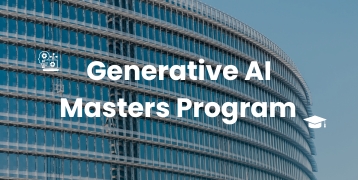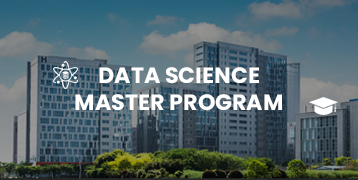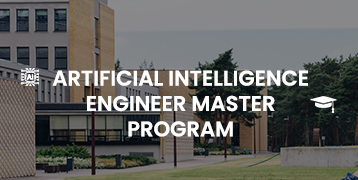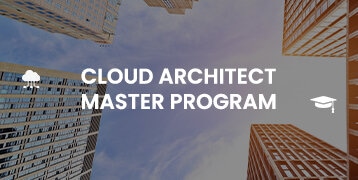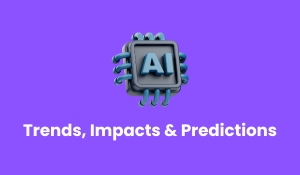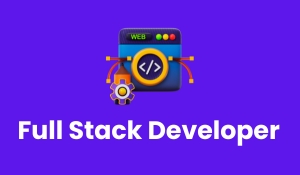
Table of Contents for a Fullstack Developer
- Introduction to Fullstack Development
- Version Control & Collaboration
- Frontend Development
- HTML
- CSS
- JavaScript (Vanilla JS)
- Frontend Frameworks
- Backend Development
- Programming Language
- Databases
- Authentication & Authorization
- API Development
- Fullstack Integration
- DevOps & Deployment
- Testing
- Performance Optimization
- Security Best Practices
- Project & Portfolio Building
- Soft Skills & Career Preparation
- Conclusion
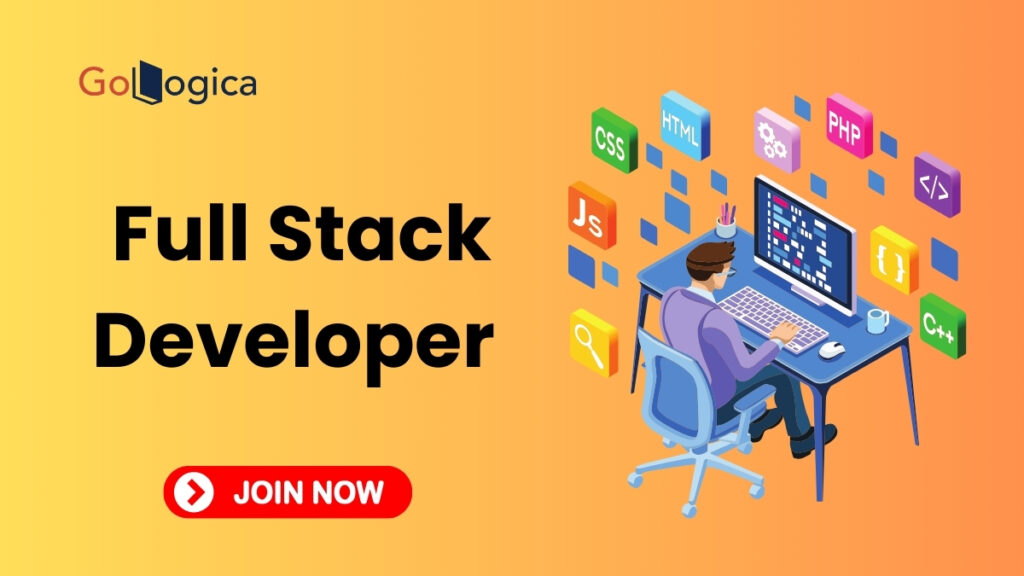
Introduction to Fullstack Development
Fullstack development involves creating web applications from the client-side and server-side. Fullstack developers will develop complete solutions from start to finish: designing the user interface, administering the databases, and building the server infrastructure. In this bridge, frontend developers and backend developers foster better collaboration, faster application development, and a general understanding of how all the pieces fit together.
Fullstack developers develop responsive and interactive user interfaces through languages such as HTML, CSS, and JavaScript. They also use frameworks such as React, Vue, or Angular. They also run Express or Node.js, as well as frameworks such as Django or Ruby on Rails on the backend to create APIs, query databases, and manage server side logic.
Fullstack developers should also be able to manage Git version control, have API integration capabilities, and be able to deploy applications on platforms such as Vercel, Netlify, or to cloud services such as AWS. Fullstack developers are respected in this rapidly changing technology world because they have the versatility to take a project from an idea to a deployment, and work at both frontend and backend companies. A Fullstack developer can enjoy a career at any size tech company.
Version Control & Collaboration:
In this Version control is an essential tool in the workflow of full-stack developers. It ensures that code is managed efficiently and collaboratively. Git allows developers to keep track of changes to their codebase and revert to older versions when necessary. They can also experiment with new features, without disrupting their main application. Teams need to have a way of managing multiple code contributors at once. Platforms such as GitHub, GitLab and Bitbucket offer remote repositories for developers to store and share code. This allows collaboration regardless of location.
Understanding how to collaborate with others by using version control is an essential skill. Features like branching and merging allow developers to isolate different features or bug fixes before combining them with the main project. Pull requests and code review foster a quality assurance culture, allowing members of the team to discuss and evaluate changes before they are implemented. This helps to catch bugs earlier and facilitates knowledge-sharing across the team. Full-stack developers can contribute to professional, scalable and maintainable applications by mastering collaborative and version control practices.
Frontend Development:
Frontend development is focused on the elements of a website that are visible to users. These are the elements with which they interact directly. It uses HTML for structure and CSS for styling. JavaScript is used for dynamic behavior. Frontend developers make sure that websites are accessible, visually appealing, and responsive across all devices and browsers. Modern frameworks such as React, Vue, or Angular are often used to create interactive components and improve the user experience. Understanding version control, performance optimization, and responsive design is also crucial. A smooth and intuitive user interface is the basis of any successful application.
HTML (HyperText Markup Language)
HTML is the foundation of every web page. It provides the basic structure and content, such as headings, paragraphs, images, links, and forms. HTML uses a system of elements and tags to define various parts of a web page, making it possible for browsers to render content in a structured way. Semantic HTML, which uses meaningful tags like <article>, <section>, and <nav>, also plays a crucial role in improving accessibility and SEO. For a fullstack developer, mastering HTML ensures that the building blocks of the user interface are solid and well-organized.
CSS (Cascading Style Sheets)
CSS is used to style and visually enhance the HTML content of a web page. It controls layout, colors, fonts, spacing, and responsiveness. Understanding core concepts like the box model, selectors, positioning, and Flexbox/Grid layouts is essential for creating attractive and user-friendly interfaces. Fullstack developers often work with CSS preprocessors like SASS or use utility-first frameworks like Tailwind CSS to speed up styling tasks. Responsive design techniques using media queries ensure that websites function well across various screen sizes and devices.
JavaScript
JavaScript brings interactivity and dynamic behavior to web pages. It enables features like dropdown menus, sliders, form validations, and asynchronous data fetching with APIs. Modern JavaScript (ES6+) includes powerful features like arrow functions, promises, async/await, modules, and destructuring that make code cleaner and more efficient. DOM manipulation allows developers to modify HTML and CSS in response to user actions. For fullstack developers, strong JavaScript skills are critical not only on the frontend but also on the backend when using environments like Node.js.
Frontend Frameworks
Frontend frameworks like React, Vue, and Angular simplify the process of building complex user interfaces. These frameworks encourage component-based architecture, where UIs are broken down into reusable pieces. React, one of the most popular frameworks, uses a declarative approach with JSX and supports state management using hooks and context. Frameworks help manage application logic, routing, and performance optimizations more effectively than raw JavaScript alone. A fullstack developer often chooses one framework to specialize in, enabling them to build modern, scalable, and maintainable frontend applications.
Backend development:
Backend development is responsible for the logic on the server, the databases, and the communication between the client and the server. JavaScript (Node.js), Python and Ruby are common programming languages, which are often paired up with frameworks such as Express or Django. Both SQL (PostgreSQL and MySQL) and NoSQL databases (MongoDB) store and manage data for applications. Security is ensured by authentication and authorization methods such as sessions, OAuth, or JWT. Backend developers design and develop APIs, typically RESTful or GraphQL, that allow the frontend to be accessed. These elements together form the foundation of a full-stack app, which enables data processing, security, and seamless user interaction behind the scenes.
Programming Language
Backend development relies on server-side programming languages to build the logic and operations that power web applications. Popular choices include JavaScript (Node.js), Python (Django, Flask), Java (Spring Boot), Ruby (Ruby on Rails), and PHP (Laravel). These languages are used to handle server requests, manage application logic, and interact with databases. Fullstack developers often choose based on project requirements, community support, and ease of use.
Databases
Databases store and manage the application’s data. There are two main types: Relational Databases (like PostgreSQL and MySQL), which use structured tables and SQL, and NoSQL Databases (like MongoDB), which store data in flexible, JSON-like documents. Backend developers perform CRUD operations (Create, Read, Update, and Delete), optimize queries, and ensure data integrity.
Authentication & Authorization
Authentication verifies user identity (e.g., login systems), while authorization controls user access to resources based on roles or permissions. Common methods include JWT (JSON Web Tokens) for token-based auth, OAuth for third-party logins, and session-based authentication. Implementing secure and scalable auth systems is a critical part of backend development.
API Development
APIs (Application Programming Interfaces) allow frontend and backend systems to communicate. Backend developers design and build RESTful APIs or GraphQL APIs to expose data and functionality. Good API design involves clear endpoints, consistent structure, and proper error handling. Documentation tools like Swagger help others understand and use the API effectively.

Fullstack Integration:
Fullstack Integration is the process that connects the frontend and the backend of a website to create a single system. This ensures that data flows smoothly and there is no interaction between the server-side logic and the user interface. It involves creating API endpoints in the backend, which the frontend can use to send or fetch data via HTTP requests. This communication is commonly done using technologies like Axios and Fetch API. To allow requests to be sent between domains, it is important to handle Cross-Origin Resource Sharing. Full-stack integration includes handling form inputs and performing validation both on the server and client side, as well as effectively handling errors or responses.
DevOps & Deployment:
Fullstack development is not complete without DevOps. This involves automating, managing and optimizing software development from coding through to production. DevOps integrates development and operations to improve workflows, enhance collaboration, and enable Continuous Integration and Delivery (CI/CD). Tools such as GitHub Actions or Jenkins, or GitLab CI/CD, automate tasks like testing, building and deploying code. This ensures faster and more reliable releases.
The deployment process involves hosting a web app on a cloud platform or server. Vercel, Netlify and Render are popular platforms, as well as cloud services such as AWS, Google Cloud and Microsoft Azure. Developers need to configure environment variables and manage secrets securely. They must also ensure that their application runs consistently in different environments (development staging production).
Containerization tools such as Docker make it easier to package and deploy applications by packaging them with all their dependencies. DNS management, HTTPS configuration via SSL certificates and domain configuration are all important components. Monitoring, alerting, and logging systems are used to ensure that the application is healthy and any issues are detected as soon as possible. DevOps is a powerful tool that not only improves application reliability, but empowers developers to release updates faster, reduce downtime and maintain high quality software in real environments.
Testing:
Fullstack Testing is an important part of the web development process. It ensures that every layer, from frontend to backend, works as expected. It is used to identify bugs, verify features and maintain code integrity throughout the entire development cycle. Fullstack testing typically includes integration testing, unit testing, and end-to-end (E2E).
Unit testing is a testing method that isolates components or functions. Developers of frontend applications use frameworks such as Jest or Mocha for testing React components and JavaScript functions. Similar tools are used to test the logic and utilities of servers on the backend.
Integrating testing tests how different modules and systems interact. Tests such as those that check the interaction between a front-end form and a back-end API can ensure data is handled correctly and responses are processed in the intended manner.
End to end testing simulates actual user behavior through automated browser actions such as clicking on buttons or submitting forms. Cypress and Playwright are tools that help to ensure the smooth operation of an entire application, from user input through to the backend response.
For building reliable and scalable applications, automated testing, continuous integration (CI), as well as maintaining high coverage of tests are crucial. Fullstack Testing not only helps to catch errors early but also supports quicker development cycles and provides a better user experience.
Performance Optimizing:
Performance Optimizing Fullstack Development focuses on improving speed, responsiveness and efficiency in both the frontend and backend, to provide a smooth experience for the user. On the Frontend, optimization includes reducing load times through minimizing CSS and JavaScript, implementing lazy loading of images and components, as well as using code splitting to load only necessary elements. Google Lighthouse is a tool that can be used to measure performance, accessibility and best practices.
Performance can be improved by optimizing database queries, implementing caching with Redis and reducing unnecessary server process. Asynchronous operations and load-balancing contribute to faster response times and better scalability.
Content Delivery Networks are used to deliver static assets closer to the users. This reduces latency. Compressing assets via Gzip or Brotli, enabling browser cache, and using modern images formats such as WebP all help to increase loading speed.
Tools for monitoring and profiling performance can help identify bottlenecks. This allows continuous improvement. Full-stack applications that are optimized can improve user satisfaction, and SEO, conversion rates and system stability. Performance is essential in today’s digital world.
Security Practices:
Security Practices is crucial for full-stack development in order to protect applications against potential threats and vulnerabilities. HTTPS is required to encrypt the data sent between client and server. SSL/TLS certificate ensures secure communication and prevents man-in-the-middle attacks.
To prevent unauthorized access, Authentication as well as Authorization should be handled using methods such as JWT and OAuth. To ensure that passwords are never stored in plaintext, use bcrypt and argon2 to hash them. Two-factor authentication (also known as 2FA) is an additional layer of security.
Use parameterized SQL queries and Object-Relational Maps (ORMs) when interacting with databases to avoid SQL Injection. Cross-Site Scripting (XSS) can also be mitigated using security headers such as Content Security Policy. Cross Site Request Forgery is prevented by using anti CSRF tokens and ensuring that sessions are managed properly.
Access Control should adhere to the principle of least privilege, ensuring users have only access to resources that are necessary for their role. To maintain a secure application, it is important to update dependencies regularly and patch known vulnerabilities.
Following these security best practices will help fullstack developers reduce the risk and severity of cyberattacks and keep their applications robust and secure.
Project & Portfolio Building:
Project & Portfolio Building is a crucial part of a developer’s career. It showcases their technical skills as well as creativity to prospective employers or clients. Developers gain experience by building projects. They also show their ability to bring an idea to fruition, integrating frontend and backend technology.
Create real world projects to solve problems or meet common needs. You can build a weather app, a weather blog, a task management system, or an e-commerce site. These projects can use a variety of technologies, including HTML, CSS and JavaScript, as well as React, Django, or Ruby on Rails as the backend frameworks.
Focus on creating a professional Portfolio Website once your projects have been built. Your portfolio should contain detailed project descriptions as well as the technologies you used, challenges you faced, and links to live applications or GitHub repositories. Your portfolio should be organized to highlight not only your best work but also your creativity, problem-solving skills, and the way you approach project development.
Do not forget to include your resume and any relevant testimonials from previous collaborators. Regularly updating your portfolio will also show that you’re always improving and staying up to date with industry trends. A strong portfolio of projects will help you establish credibility in the job market and demonstrate your ability to take on real-world challenges.
Soft Skills & Career Preparation:
Soft Skills & Career Preparation are just as important as technical abilities for a fullstack developer’s success. In addition to mastering programming languages and frameworks, developers must cultivate communication, problem-solving, and collaboration skills, which are essential for working effectively in teams and interacting with clients or stakeholders.
Communication skills are crucial for explaining technical concepts clearly to non-technical team members, writing concise documentation, and effectively participating in code reviews or team meetings. Good communication also extends to presenting your work in interviews or client meetings, where articulating your thought process and problem-solving strategies can set you apart from other candidates.
Problem-solving and critical thinking are core skills for navigating complex development challenges. Fullstack developers often need to troubleshoot issues across both the frontend and backend, making these skills essential for identifying solutions efficiently and creatively. Additionally, being adaptable and open to feedback can help in improving both technical abilities and team dynamics.
In terms of career preparation, staying updated on industry trends, tools, and best practices is key. Participating in coding challenges, contributing to open-source projects, and networking through events or platforms like LinkedIn or GitHub can help you connect with potential employers or collaborators. Practicing for technical interviews, improving your resume, and preparing a compelling portfolio are all part of the preparation for landing a job or freelance work.
Lastly, an understanding of Agile methodologies and team dynamics is helpful, as many companies adopt agile practices for efficient project management and development cycles. By combining technical expertise with strong soft skills and career preparation, fullstack developers position themselves for long-term success in the industry.
Conclusion:
GoLogica provides a comprehensive solution to aspiring fullstack web developers. It offers training and resources covering both frontend technology and backend technology. GoLogica provides developers with expert guidance, hands-on projects, and the tools they need to build complete web applications, integrate advanced security, and manage databases. The curriculum focuses on industry-standard techniques and tools, preparing students to face real-world challenges. GoLogica empowers its developers with both technical and soft skills to succeed in the rapidly changing tech industry.
Here’s a look at some common interview questions and answers for full-stack developers:
Q. What is Fullstack?
Fullstack involves both building the frontend (user interface) and backend of web applications (server-side). Fullstack developers use databases, APIs, and client-side as well as server-side programming.
Q. What are the core competencies required to be a Fullstack developer?
Fullstack designers need to have a solid understanding of frontend technologies such as HTML, CSS and JavaScript, along with coding skills in backend languages, like Node.js, Python, or Node.js. It is important to have a working knowledge of databases, version control, and APIs.
Q. How important is version control to Fullstack Developers?
Version control, especially with Git is essential for tracking changes in code, collaborating with other teams, and maintaining code integrity. It allows developers to manage multiple versions of the same project.
Q. What role do APIs play in Fullstack?
APIs are used to connect the frontend with the backend, allowing data exchange. Fullstack developers create and integrate APIs that allow the frontend of an application to communicate with databases or other external services.
Q. How can Fullstack Developers improve the performance of their applications?
Fullstack developer can optimize application performance by reducing unneeded code, caching, optimizing queries in databases, and using CDNs. Frontend optimizations such as lazy loading, improve user experience and speed.
Related Courses Information
| Program Name | Duration | Fee | View Details |
|---|---|---|---|
| Full Stack Developer Masters Program | 24 Weeks | 162000/- | Enroll Now |
| Data Science Masters Program | 24 Weeks | ₹88290/- | Enroll Now |
| Data Analyst Masters Program | 24 Weeks | ₹68400/- | Enroll Now |
| AWS Cloud Architect Training Course | 24 Weeks | ₹68400/- | Enroll Now |
| Cloud Architect Masters Program | 24 Weeks | ₹85635/- | Enroll Now |
| Artificial Intelligence Training in Los Angeles, US | 24 Weeks | ₹78300/- | Enroll Now |

